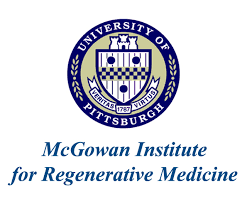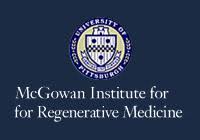Overview
To realize the vast potential of tissue engineering and other techniques aimed at repairing damaged or diseased tissues and organs, the University of Pittsburgh School of Medicine and University of Pittsburgh Medical Center established the McGowan Institute for Regenerative Medicine. The McGowan Institute serves as a single base of operations for the university’s leading scientists and clinical faculty working in the areas of tissue engineering, cellular therapies, and artificial and biohybrid organ devices.
The Institute’s mission includes the development of innovative clinical protocols as well as the pursuit of rapid commercial transfer of its technologies related to regenerative medicine. Also critical to the mission is the education and training of the next generation of scientists, clinicians and engineers who will be carrying the field forward toward the ultimate goal of patient benefit.
The McGowan Institute Director is William R. Wagner, PhD, who is a professor in the Department of Surgery at the University of Pittsburgh, with joint appointments in the Departments of Bioengineering and Chemical Engineering. He is an active researcher in the biomaterials field and leads a research group focused on developing technology to address cardiovascular disease.
The Institute takes its name from the McGowan Center for Artificial Organ Development, which has been incorporated into the McGowan Institute. Through the McGowan Institute’s expanded role and mission, other university faculty have joined forces to address promising opportunities in tissue engineering, adult-derived stem cell research and wound healing.




Reviews are disabled, but trackbacks and pingbacks are open.